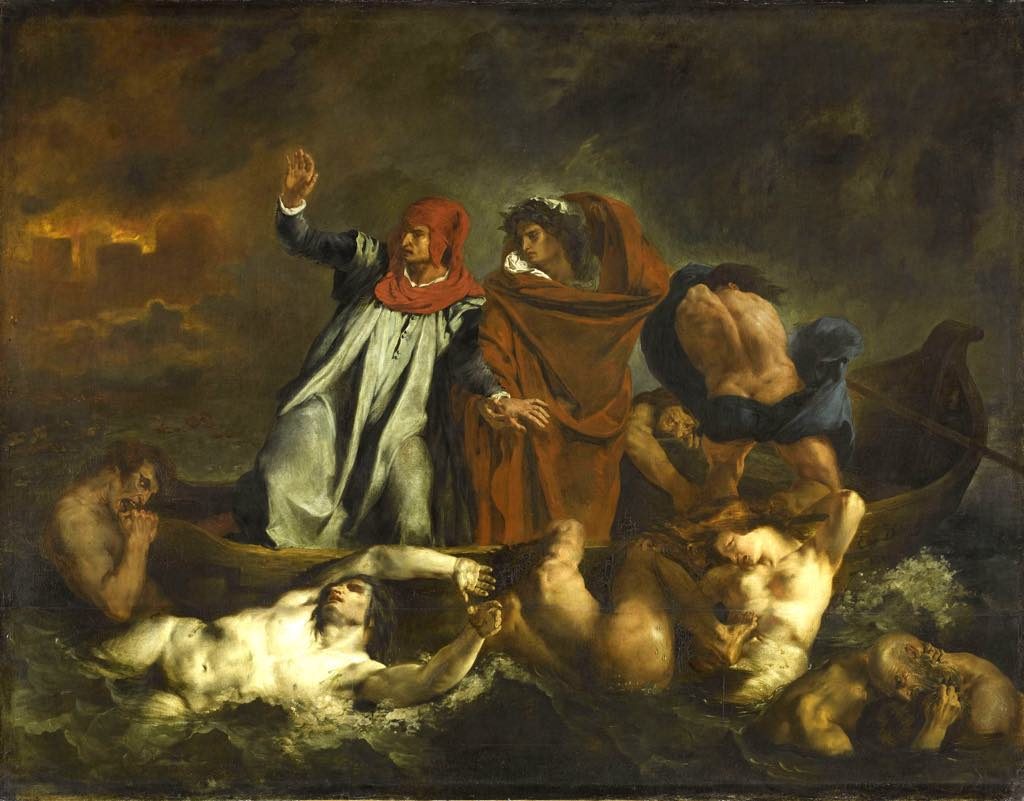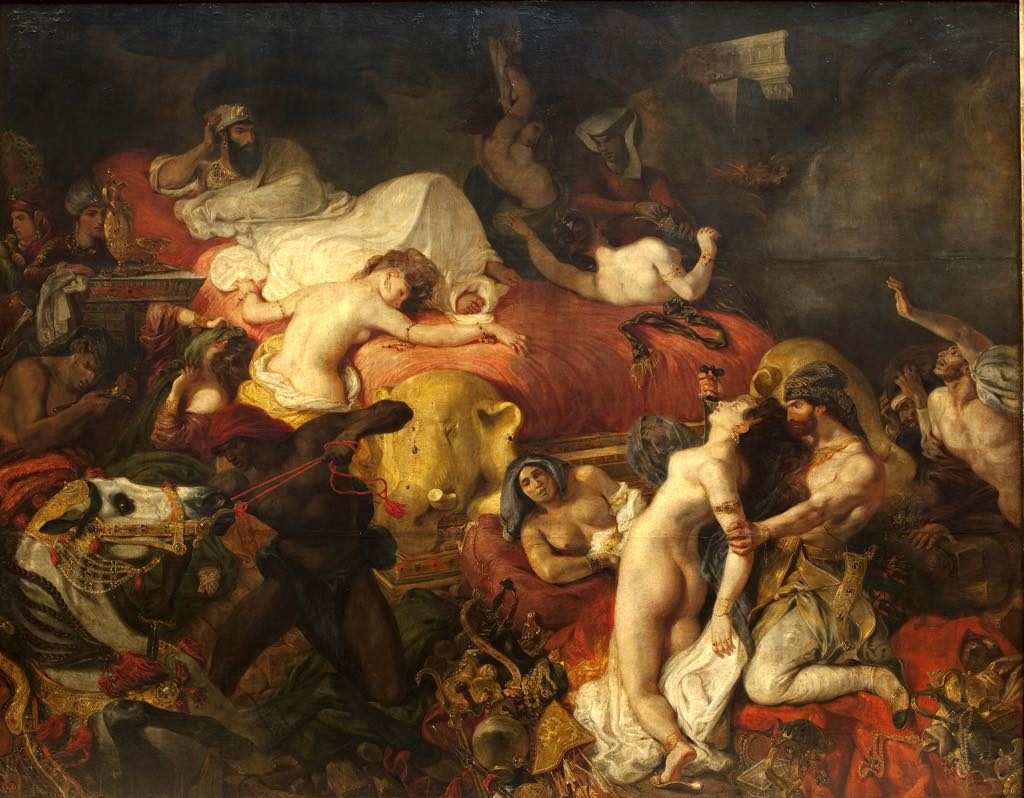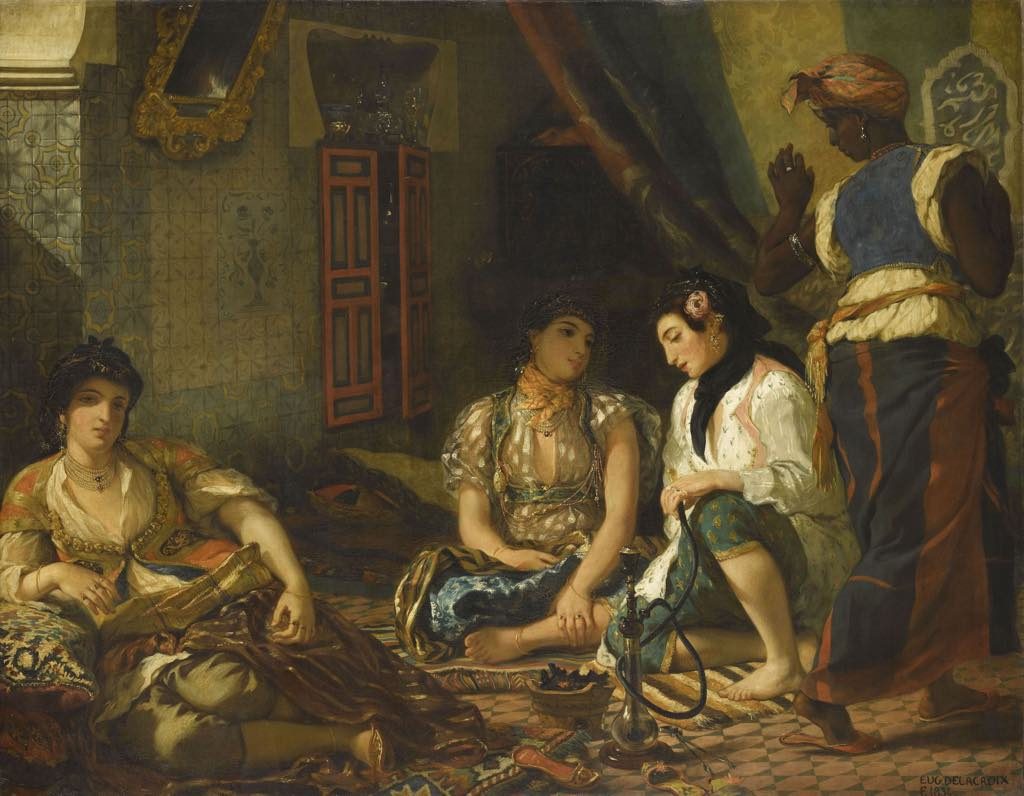In a letter covered in daubs of paint of many colors, the 29-year-old Eugène Delacroix (1798-1863) asked his art supplier to urgently send him paints that were “more liquid than the colors prepared for everyone else,” revealing both his passion for his work and the way he reveled in his difference from other painters. It’s a nice illustration of the position of the curators of the current Delacroix retrospective at the Louvre, who state that the artist is “best defined by a quest for singularity and a belief in the expressive power of painting, rather than the elusive term ‘Romanticism’.”
Early in his career, the ambitious Delacroix (who once wrote to a friend, “Glory is not an empty word for me”) set out to differentiate himself from neoclassicists like Ingres and David and sought quick recognition by exhibiting at the Salon (the official exhibition of the Académie des Beaux-Arts in Paris) as soon as he could.
He meant to shock and he succeeded, painting such gory scenes as “The Barque of Dante” (1822), referencing his friend Géricault’s famed “The Raft of the Medusa” (1818-19) and “The Death of Sardanapalus” (1827; too large to be moved to the exhibition, it can be seen in the Louvre’s Salle Mollien on Level 1 of the Denon Wing). The latter painting caused a huge scandal with its depiction of the besieged king of Assyria indifferently watching from his sumptuous bed the massacre he had ordered of his concubines (voluptuously naked in the painting) and servants.
Although Delacroix was out of favor for a while as a result, his reputation quickly rebounded. This was to become a pattern in his career: acclaim followed by scandal followed by renewed acclaim.
The show includes examples of the many genres Delacroix worked in, aside from the above-mentioned heated historical and mythological scenes. There are his illustrations for works of Shakespeare, Byron and Goethe (note the wonderful sketches in the margins of his lithographs illustrating Faust). Among the few portraits on show is the full-length “Portrait of Baron Louis-Auguste Schwiter” (1826), a souvenir of his trip to England, influenced by the portrait painter Thomas Lawrence.
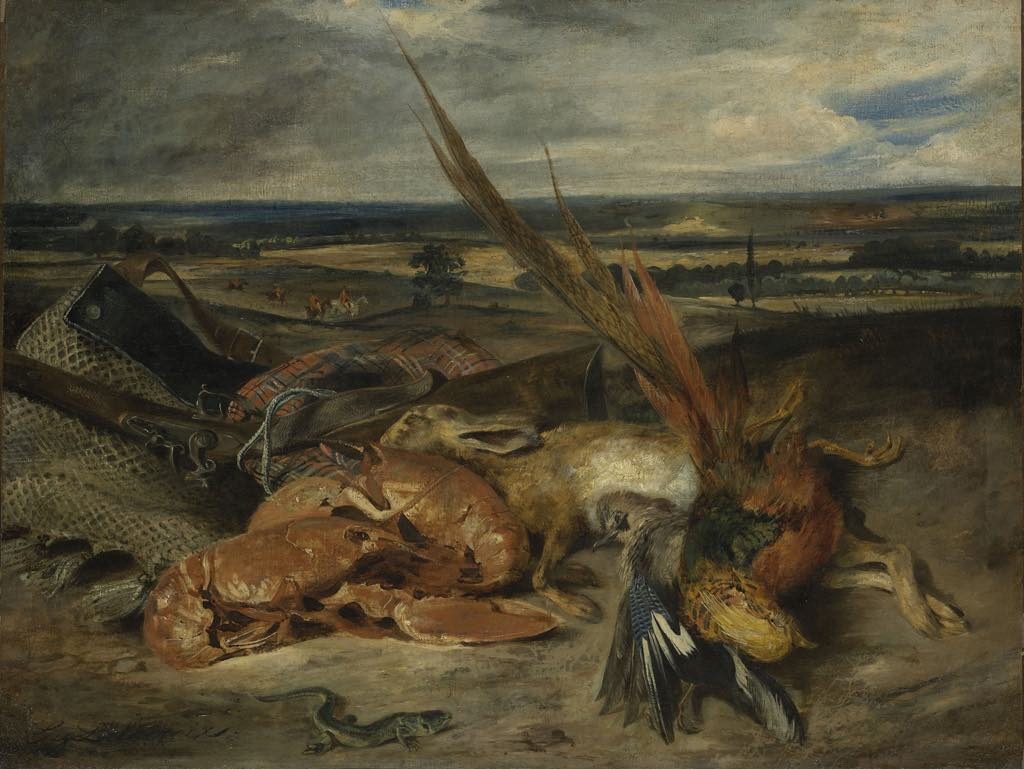
The still lifes here include bouquets of flowers, some of them rather twee, as well as the strange “Still Life with a Lobster,” which places the lobster, a dead rabbit and game bird, and some rifles outdoors in the foreground of an expansive landscape.
Many of the religious paintings from the 1840s are wonderful, especially “The Lamentation (Christ at the Tomb)” (1847), in which the mourners form an intimate circle around the body of Christ. His body and the white sheet that covers him glow with light against the dark, desolate landscape in the background.
There are several small paintings of nudes as well as a scene of bathers made before Cézanne (an admirer of Delacroix, along with Manet, Renoir, Van Gogh, and Matisse) got around to painting the subject. Notable among the “Orientalist” scenes from his travels in North Africa is the famous “Women of Algiers in Their Apartment” (1833-34), a rare view of unveiled Muslim women.
Delacroix was a genius at painting animals, as evidenced by the magnificent “Young Tiger Playing with Its Mother” (1830), pictured at the top of this page, as well as the many depictions of horses, lions and other animals, often twisted into wild poses in the throes of action.
An interesting section near the end of the show demonstrates how Delacroix would sometimes repaint a work from memory as a way of re-evaluating his earlier works.
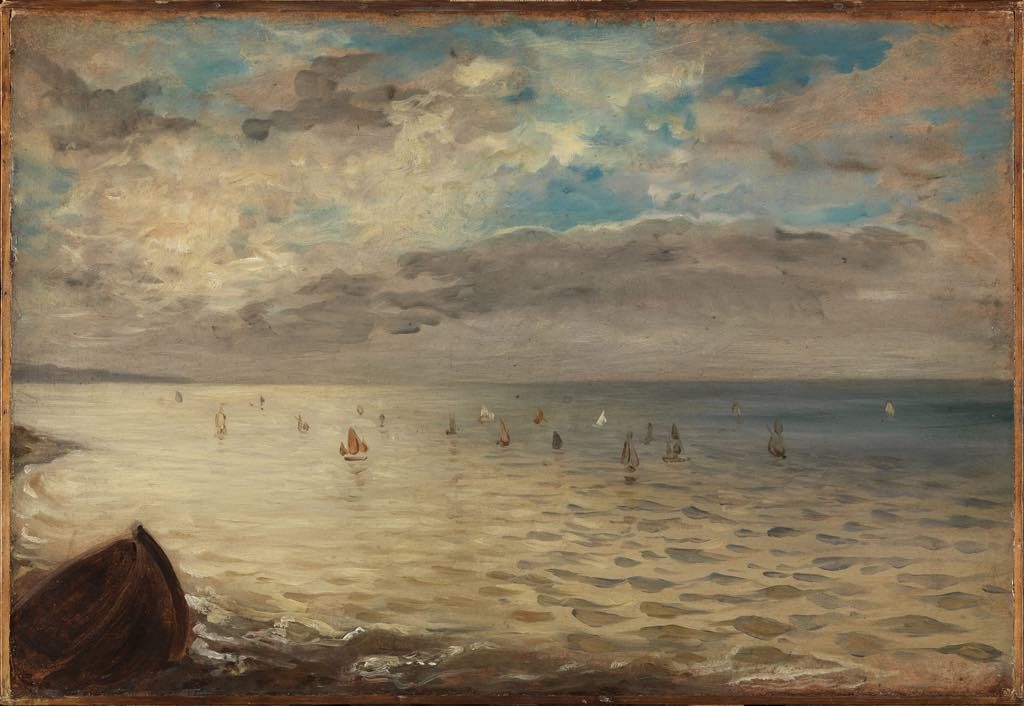
Don’t skip past the lovely watercolors, brilliant in their suggestiveness, or such works as “Forest near Sénart,” (c. 1850), from a private collection, which helps explain why Delacroix was appreciated by the Impressionists, who were developing their style toward the end of his life, as does “The Sea from the Heights of Dieppe” (c. 1852), with its lovely effects of light on water and clouds.
Though Delacroix’s work may not look revolutionary to us today, it was in his time. With its radical break with the past and passionate, expressive painting style, it opened the way to modernity. This show is a must-see for anyone interested in the turning points of art history.
If you enjoyed this article, you might also like Mary Cassatt: An American Impressionist in Paris.
Favorite

